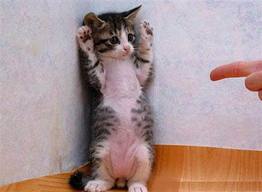Este examen final lo vamos a hacer oral.
Vamos a contar las historias del libro de Movers.
Introducción:
Acordaos de hacer una introducción, del tipo:
"In this story...."
y podemos contar qué personajes aparecen en la historia y quiénes creemos que son.
There is a boy (si hay uno)
There are two girls (si hay más de uno)
Luego podemos contar quiénes creemos que son. Como no lo sabemos, sino que lo imaginamos, diremos algo como:
I think they are friends
I think they are sisters
I think they are cousins
Si uno es más mayor que el otro, podemos imaginar :
I think they are mother and daughter
father and son
aunt and niece
uncle and nephew.
Luego contaremos donde están:
They are in a park/ forest/ jungle/ at home...
Si no sabemos decir el sitio exactamente, no importa. Diremos el nombre de un sitio que sepamos decir que se parezca.
(por ejemplo, si no nos acordaos de cómo se dice GYM=gimnasio, diremos Sports school)
Podemos añadir algún detalle de lo que hay y no hay, pero no hace falta contar muchas cosas, porque lo que nos han pedido es que contemos la historia.
Podemos aprovechar para decir alguna preposición:
Next to the boy there is a lake
Behind the girl there is a lion.
In front of the woman there is a frog.
Empezamos a contar la historia
Picture1.
- What are they doing? ¿qué están haciendo?
Si es un personaje:
the boy is.... walking in the park
the girl is.... going home
Si hay más de un personaje:
They are .... going to have a picnic in the forest.
The friends are.... coming back home (volviendo a casa)
- What do they want? ¿qué creemos que quieren?
I think the boy wants a pet.
I think the girl wants to catch a frog.
I think he wants to go to the gym.
I think they want to have a picnic.
- Si se nos ocurre algo más, lo decimos.
- Si nos atascamos, decimos:
Let me think....
O hablamos de lo que hay, para coger soltura: Señalamos y decimos:
There is a boy. There is a river.
Pictures 2 and3. What happens here? ¿qué ocurre?
Podemos contarlo en presente simple:
The girl tries to catch the frog (intenta atrapar la rana)
The boy sees a goat.
They sit down to eat (se sientan a comer)
¡Importantísimo! no os olvidéis de la "s" si el sujeto es como he, she o it.
Picture 4. Podemos concluir diciendo,
At the end of the story,
the girl has got a fish.
the boy has a bag with dirty clothes (bolsa con ropa sucia)
Acordaos de que podemos usar el truco del teatrillo: podemos nombrar el personaje y decir lo que piensa:
the boy says: you shouldn't eat my bag!
the mother says: What are you doing?
and the daughter says: I have got a fish!
the boy thinks: Oh, no! this is not my bag!
Good luck!





















